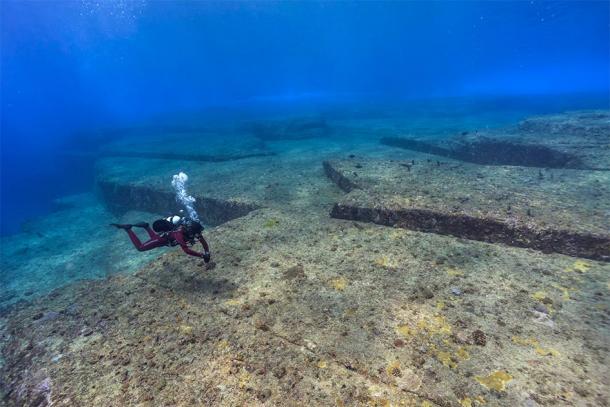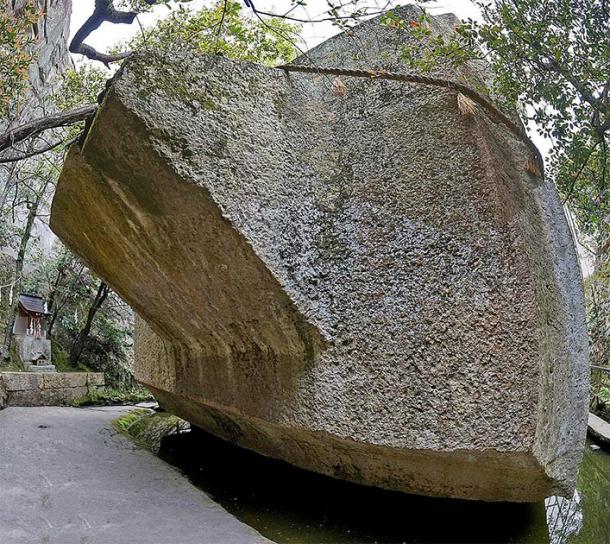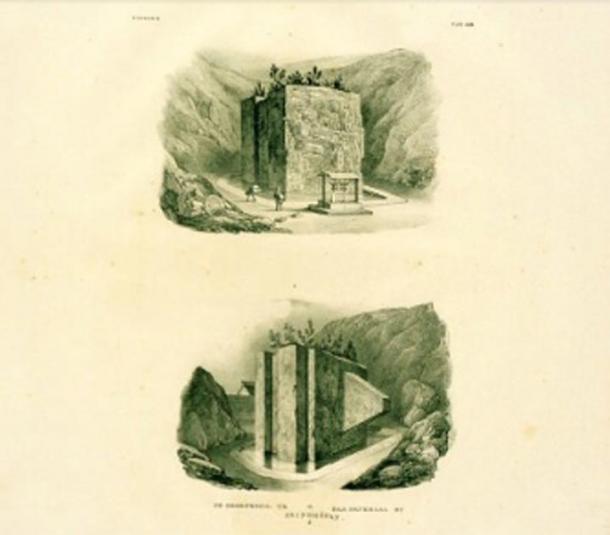Everyone knows Yonaguni, but did you know about all the land-based mysterious monuments of Japan ?
A much-neglected area of research. Great article by FREDDIE LEVY
A hurdle in the way of many Western researchers of megalithic Japan is the mystique that surrounds the history of the combined 6,800 islands that piece together the archipelago of Nippon – a place where the Sun originates .
Whether this is due to the rather protected, insular tradition that was practiced up until 1853 when US Naval Commodore Mathew Perry led the first official diplomatic mission into Japanese waters, the idea that the history of ancient Japan has to be blanketed, one hopes, should start to fade and allow more independent research to investigate the wonderful cultures that flourished across the islands thousands of years ago.
Maybe due to the vast amounts of sheer labor and frantic funding that went into the systematic industrialization and total reconstruction following the 1940s and 50s – an effort which clearly bore fruit (as of March 2020, Japan retains the third strongest economy in the world [Silver, March 2020]) – there seems not to be much room for study and deeper understanding of these brilliant monuments that lay scattered throughout the land.
Speaking to people from across Japan, one gets a sad sense that the Japanese government does not care much about these monuments. Fortunately, many of these misunderstood megaliths are protected to this day by their adoption as sacred sites by the numerous ancient religions practiced to this day – Buddhism, Shintoism and Taoism, to name a few.
Yonaguni
It would be remiss to discuss megalithic Japan without first paying homage to the eerie underwater imagery of sharp stone angles, apparent causeways and unexplainable shapes that comprise the Yonaguni Monument site. Since being discovered in 1987 by a local scuba diving instructor named Kihachiro Aratake, two things make this place so unique: the, what appears to be so apparent, strange nature of the rock formations and patterns that make up the site and the sheer controversy that surrounds the site.
The first point was tackled head on by researcher Hancock in his 2002 TV documentary-series (see below), aired on the UK’s Channel 4, titled Underworld: Flooded Kingdoms of the Ice Age , where he dived on a series of sites around the ancient city of Dwarka on the northwest Indian coast in the state of Gujarat, before turning to the Yonaguni Monument (named after the westernmost inhabited island of Japan closest to it) – a 150-meter-long (492-ft), 400-meter-wide (1312-ft) stone site, lying within the East China Sea only a little bit over 100 kilometers (62 mi) off the east coast of Taiwan.
Whilst in the show, and in his publication by the same name, Hancock, Professor Maasaki Kimura – a geologist from the University of the Ryukyus, and Sri Sundaresh – a marine archaeologist working out of India’s National Institute of Oceanography, all dived at the site and believed it was largely altered by humans. Among other factors, they pointed to two megaliths with completely straight edges, and a trench that features two 90-degree angles. Considering it’s now up to 25 meters (82 ft) underneath the surface this would suggest it was created when the water level had last receded, thousands of years ago.
However, in keeping with the second point regarding controversy, a German geologist by the name of Wolf Wichman also accompanied them but took the contrarian view. Further, the renowned geologist famous for his initially controversial re-dating of the Great Sphinx of Giza – Robert Schoch (normally not one to shy away from a controversial non-mainstream perspective) believes the site is a naturally occurring geological formation after diving with Hancock in the late 90’s. However, Schoch does speculate that “it is possible that they [the ancient locals] “touched up” parts of the rock close to the shoreline… making them appear artificial” (New Scientist, 25 November 2009).

A diver inspecting the underwater site of Yonaguni, a key site in megalithic Japan. ( hoiseung jung/EyeEm / Adobe stock)
Just like waters off Yonaguni Island during typhoon season, the debate still rages. Yet, proving there was a culture capable of such feats of megalithic masonry, occupying Japan thousands of years ago, may offer some sway to the argument.
Ishi-no-Hoden
We truly begin our journey in the Hyōgo Prefecture of the Kansai region. Whilst it’s spring, you may witness the picturesque scene of cherry blossoms on the surrounding trees, gently blowing across the foreground of Himeji Castle, the air filled with subtle blush-pink snowflakes. However, that is not what we have come to focus on.
Laying approximately 11 kilometers (7 mi) to the southeast of Himeji Castle, near to the town of Takasago, is the aptly named Stone Sanctuary . Admittedly, “laying” does Ishi-no-Hoden no justice – the close to 500-ton megalith miraculously has the illusion that it’s “floating” upon its watery base, providing the basis for the local name – Uki-ishi – meaning Floating Stone . It’s true that the weathered megalith appears as if some strange force is allowing it to balance breathlessly upon the open, spring-fed water (believed to be the case since the shrine’s records state it never dries up, even in drought).
However, upon closer inspection, the only strange force at play is the precision-cut engineering that’s allowed the excess rock to be cropped away, suspiciously tight to the megalith’s base, providing a steep internal gradient to the edge approaching the surrounding water.

An important site in megalithic Japan is the ancient Ishi-no-Hoden megalith or Floating Stone, which can be found in the Hyōgo Prefecture of the Kansai region. (z tanuki / CC BY 3.0 )
First mentioned in western works by Philipp Franz von Siebold, this intrepid German doctor found himself facing this behemoth after disguising himself as a Dutch merchant in order to gain access to the tightly controlled Japanese islands in the late eighteenth and early nineteenth century. A talented artist, his beautifully illustrated work entitled “Nippon” depicts the strange, angular design of Ishi-no-Hoden in all its raw, un-doctored form (Siebold, 1832, p. 24).

Ishi-no-Hoden megalith or Floating Stone. (Image: With permission Nippon Atlas. n.5″ Kyushu University Library Collections)
Close to two centuries later, through 2005 to 2006, the University of Otemae and the local town council “conducted three-dimensional laser measurements and carefully studied the nature of the surrounding rock”, concluding it was formed of hyaloclastite, a form of volcanic accumulation from activity millions of years ago (Pavlik, 2018). Whilst there are no clear tooling marks around the stone itself, one can only wonder how long it’s been sitting there, and what type of weathering erosion may have worked away at it over the suspected thousands of years since its initial alteration by man.
- Ryukyu Kingdom: Castles, Customs, and China and Japan’s Rivalry
- The Amazing Story of Yasuke: The Forgotten African Samurai
- The Controversial Iwajuku Site and the Argument for the Japanese Paleolithic Period
READ THE REST (Fairly lengthy article, but well worth a read!)

Get your copy from our Online Store or your local book and magazine retailer
Australian Retail Locations » Uncensored Publications Limited
New Zealand Retail Locations » Uncensored Publications Limited
As censorship heats up and free thought becomes an increasingly rare commodity, we appeal to our readers to support our efforts to reach people with information now being censored elsewhere. In the last few years, Uncensored has itself been censored, removed from the shelves of two of our biggest NZ retailers – Countdown Supermarkets and Whitcoulls Bookstores – accounting for 74% of our total NZ sales.
You can help keep the Free Press alive by subscribing and/or gifting a subscription to your friends and relatives.








